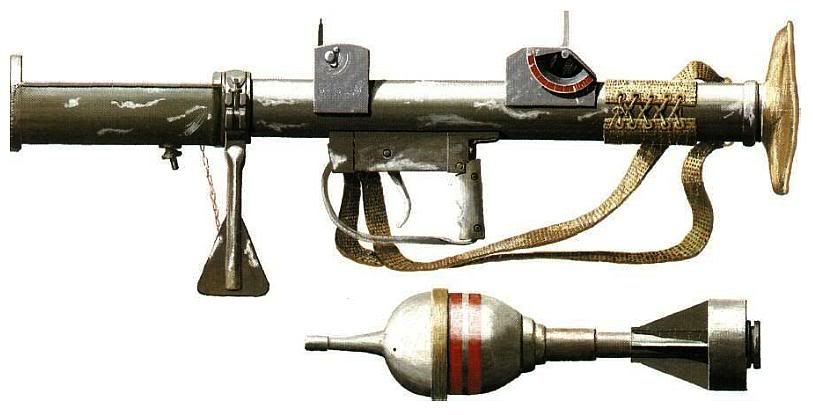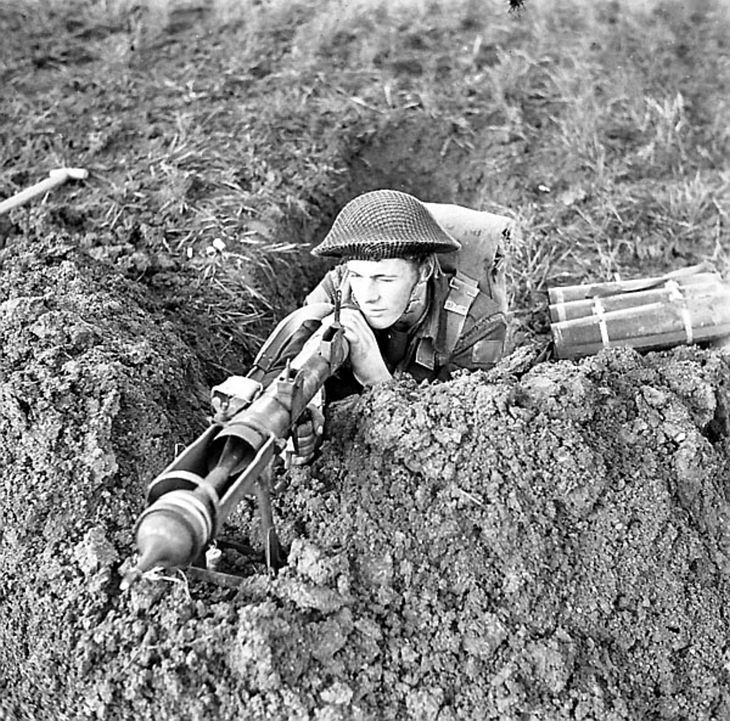
The PIAT, for Projector, Infantry, Anti Tank, was the first effective anti-tank weapon based on the HEAT shell. It was developed by the British starting in 1941, reaching the field in time for the invasion of Sicily in 1943. Unlike the US bazooka and it's German copy, the Panzerschreck, the PIAT could be used in enclosed spaces which made it more useful in close-combat and for hiding in houses.
At the start of World War II, all major armies were investing in research into HEAT to produce an infantry weapon capable of defeating modern armor. The US and Germans concentrated on rockets to propel their weapons, in 1941 when the PIAT was being developed, these systems were nowhere near ready for use.
Instead they turned to a prewar weapon known as the Blacker Bombard, a small man-portable mortar using a large spring for propulsion. The spring pushed against a 12 pound steel canister and rod that rode up the barrel and impacted with the rear of the shell, igniting a small propulsion charge. The heavy bolt and rod, known as the spigot, was used primarily to damp out the recoil of the round leaving the barrel.
The Blacker Bombard was never used operationally, but was perfect for modification as the launcher for a HEAT round. For this use the upper portion of the "barrel" was cut away on one side to form a trough, which could be reloaded by dropping rounds into it while lying prone. The charge on the shell was small enough that it caused no real smoke or backblast, a significant advantage over the bazooka. On the downside the spring required a heavy barrel to hold it, and the spigot itself added even more weight, resulting in a weapon that weighed 34 pounds unloaded.
The three pound HEAT warhead was able to penetrate about 100mm of armor at 100m, the weapon's rate range. This was too little to defeat the frontal armor of the newer German designs, but remained effective against side and rear armor.Private Ernest Alvia "Smokey" Smith of the Seaforth Highlanders of Canada earned the Victoria Cross after crawling to within 10 metres of a Panther to destroy it. The weapon was also used in a "house breaking" role out to about 350m.
Early rounds used in Sicily proved to require a "perfect" hit or they would not fire, and the weapon soon garnered a poor opinion among the troops. The Army then instigated a rapid series of improvements, and by the time of the invasion of the Italian mainland, the weapon had matured completely.









































